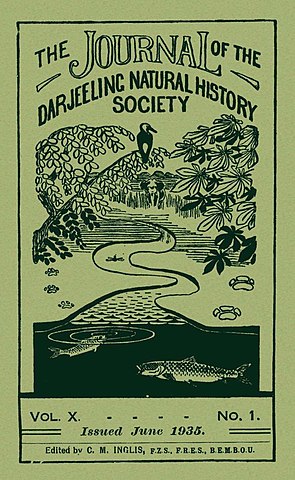Alongside the activism against the plume trade in Victorian England, there was a widespread interest in understanding the "value" of birds to Indian agriculture possibly since many birds were trapped for the trade coinciding with famines in India. It was also a period when the British Empire intensified agricultural research efforts. Recall that professional agricultural entomology in India was influenced by Eleanor Ormerod who suggested that if she could do as much as she did voluntarily for English agriculture, a lot could be done with a paid position in India! Ormerod, oddly enough, was engaged in a campaign to eradicate the sparrow in England when other upper class ladies were clamouring for the protection of birds. While Reverend F.O. Morris and some other male conservationists wrote letters noting her deviation from expected feminine conduct and requested her to show "compassion ... and fulfil her duty as a woman", there were farmers who agreed with her and argued on Christian foundations that although sparrows "... were created for some wise purpose. Such was undoubtedly the case in the original order. But the Great Creator made man to rule over the fowls of the air and the beasts of the field, leaving it to his judgment to destroy such that were found more destructive than beneficial." [Bradshaw, 2014; Holmes, 2016] As early as 1892, the idea that some careful examination was needed was mooted and the phrase "economic ornithology" was introduced by Earl Cathcart.
Present at the same meeting was a professionally employed south Indian entomologist from Coimbatore, P. Susainathan. Susainathan had written an interesting note on the birds of the Coimbatore region from a standpoint of economic ornithology called "Bird Friends and Foes" (1921). Susainathan later worked in Iraq and at some point decided he was better off catching insects for taxonomic specialists and began perhaps a career unique in India, at least for an Indian (there were professional collectors like William Doherty who made much larger collections, pers. comm. Michael Geiser, NHM London). He advertised in various entomological magazines and offered to send specimens from India within the group that they were interested in. The Wikipedia biography covers the key bits on him and his family members who continued in the collection enterprise. There are nearly forty insect species with names like nathani or susainathani, nathanae, and nathanorum (of Mr Nathan, of Mrs Nathan, of the Nathans). Susainathan's book has a description of the sparrow which includes the term "aerial rat" which recalls Ormerod's usage of "avian rat".
 |
| The Nathan family in the 1970s - photo from Karl Werner (1956-2007) P. Susainathan is second from right in the back row. Scan courtesy of Juergen Wiesner |
It is worth recording that professional entomologists appear to have guarded the field of economic entomology as far as its applications to agriculture went. When Salim Ali made an application to the ICAR to study birds (see linked document in the National Archives of India), Baini Prashad of the ZSI was largely supportive, but the proposal was essentially nixed by the Imperial Entomologist at that point of time (viz. Hem Singh Pruthi, although the letter seems to have been forwarded to the government by F.J.F. Shaw). Pruthi's comments are worth noting for the tone of protection of the professional turf (apart from some casual sexism):
The most suitable man for undertaking the study of Insectivorous birds is one who is primarily a good entomologist and possesses some knowledge of birds in addition. He should be familiar with the habits of the Insect fauna of the area and be able to identify himself the stomach contents of the birds immediately after their death. The chief man should have a taxidermist to assist him in the preservation of the birds, which can be got named by specialists afterwards.
Further reading
- Bradshaw, D. (2014). "Wretched Sparrows": Protectionists, Suffragettes and the Irish. Woolf Studies Annual, 20, 41-52.
- Holmes, Matthew (2016). The Sparrow Question: Social and Scientific Accord in Britain,1850–1900. Journal of the History of Biology 50(3):645-671.
- Mason, C.W. (1907). The Food of the Mynah. The Agricultural Journal of India 2(3):280-282.
- Mason, C.W. and Maxwell-Lefroy, H. (1911). Memoirs of the Department of Agriculture in India. The Food of Birds in India. Calcutta: The Imperial Department of Agriculture in India.
- Susainathan, P. (1921). Bird
Friends And Foes Of The Farmer. Department of Agriculture, Madras. Bulletin no. 81.
 |
| Beri's card from Salim Ali's card collection (now in the NCBS archives) |


No comments:
Post a Comment